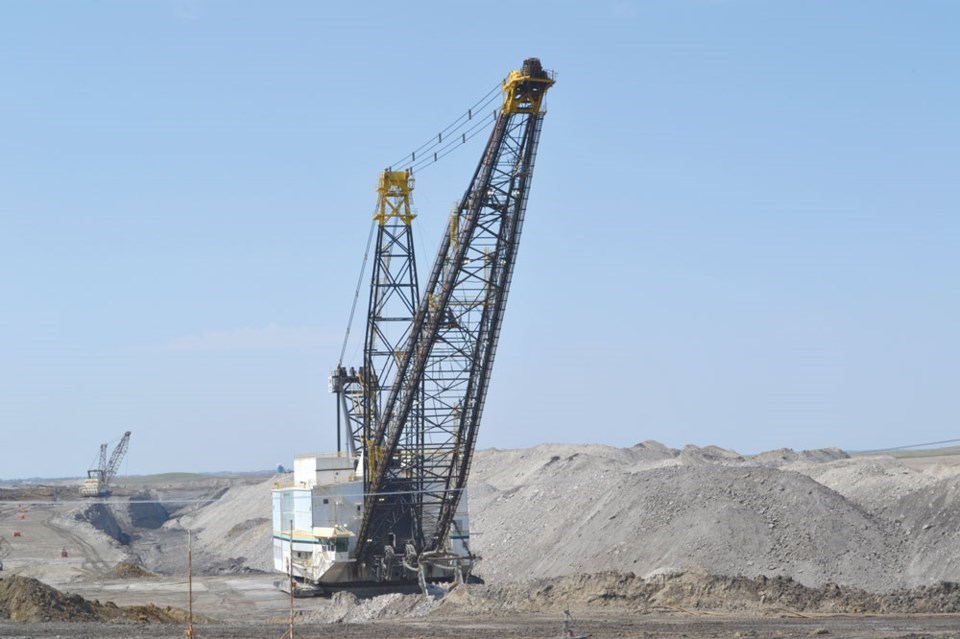Once I heard from a friend that coal and coal mining were part of local people's identity, so big of a role the industry played in the formation of the Estevan area and so much it meant to so many people of different generations.
There are pieces of evidence that coal has been used for over 2,000 years, of course not at the industrial scale we have today, but our ancestors have known about its characteristics and benefits for a while and used it for their needs as fuel and later in manufacturing.
Coal has been mined in Saskatchewan ever since the 1850s when early pioneers would dig it to use as a source of heat in the plain and treeless Prairies. So, coal has had a great value in this area for longer than this country has officially existed.
Settlers in the Estevan area were also aware of the local deposits and started extracting coal and using it even before the turn of the 20th century. (To this day the remains of those old small mines can be found around Estevan).
The practical value of coal has shifted since the days of pioneers, as in Canada it's mainly used to generate electricity nowadays, as well as in metallurgical applications such as steel production. The emotional value of it for the community probably only grew since the development of this industry and other energy sectors allowed Estevan to become the way most of us living here today know it – a successful and prosperous city.
Even though I don't think a field, job or industry can be a part of an individual's identity (just in the sense of terms and the meaning of the concept), coal definitely comes close and historically was one of the main identifying factors of the Energy City. It's hard to overestimate the role coal mining plays in people's lives here (and to be fair anywhere else where mining is a thing).
Not only does it create well-paying jobs at the mines and in coal-fired power generation, which allows for a decent lifestyle for hundreds of people and their families, but it also generates a spin-off environment around itself, which stimulates the growth and development of the communities, making them more vibrant and thriving.
Mines often become local economic mainstays, and then infrastructure grows around them. Of course, the Estevan area also has oil and is an agrarian region, but who knows if we would have ever made it as a city if it wasn't for layers of coal underneath us.
Even before I learned anything about the local coal mining industry, whenever the topic was brought up, the first thing that would come to my mind was pride. I'm not even sure where I picked it up, as I grew up far away from any valuable deposits and didn't know much about resources industries outside of what they teach in geography. But somehow I knew that there was a lot of pride in being involved in coal mining.
Thanks to many knowledgeable and experienced people I met here, I learned a lot about miners' work, the industry development as well as the birth and subsequent growth of the union. And every person in the industry I talked to was indeed sincerely proud and excited about the work they do and the field they work in. You must agree, it's not something you see too often, especially if we are talking hard, mostly shift work that's dangerous in nature.
And that pride associated with coal mining also appeared to be contagious, as even though I've never been connected to the industry, I, too, was touched by that lifting feeling of being a part of something big and valuable.
Even throughout the last century, coal mining anywhere in the world has seen many changes. More changes are coming both locally and in many other places (so far it still seems that not everywhere).
Frank Smart, one of the Tale that is Told contributors, said that "Coal is synonymous with Estevan". And it's indeed so to this day. Even those people that came here recently, quickly learn about Big Lou and other big guys working hard and slowly walking around the area. (They are hard to miss). We then learn about the history of the 1931 strike, Lignite Louie, coal-power generation and carbon capture and other important pieces.
And while coal is not a part of the people's identity, it's definitely part of the local history, which affected the culture and shaped the community throughout the years. And it's a strong industry worth celebrating, hopefully, for many years to come.



